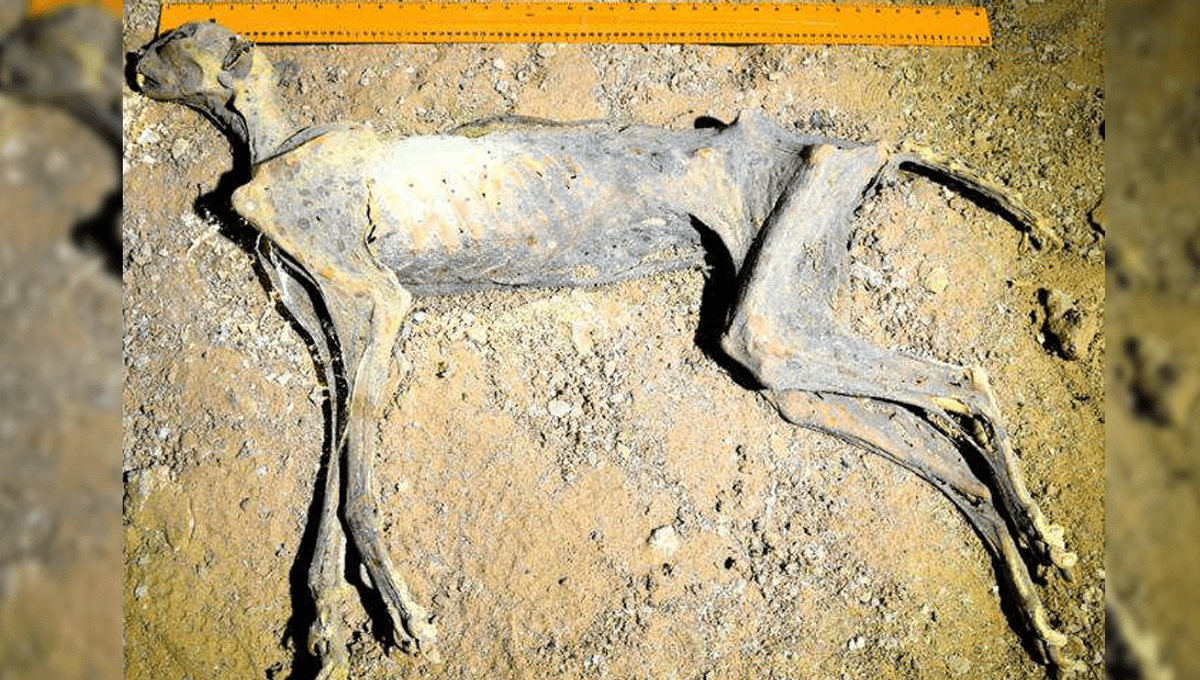
A lot of fun creatures dwell in caves, from cave spiders to the orange crocs and even a whole range of eyeless beasties. However, one species not typically found in caves is cheetahs, but a host of their mummified remains has been discovered inside a cave in Saudi Arabia.
The rest of this article is behind a paywall. Please sign in or subscribe to access the full content.
Cheetahs were once widespread across the Arabian Peninsula but have lost around 98 percent of their original historic range. Inside the cave, part of the Lauga cave network in northern Saudi Arabia, the team found the remains of seven naturally mummified cheetahs, alongside skeletons amounting to 54 more individuals, as well as examples of their prey.
The oldest specimen of skeletal remains found in the cave was thought to be approximately 4,223 years old, with the youngest dated to 127 years old as a preserved mummy. The two oldest samples are more closely related to the northwest African cheetah (Acinonyx jubatus hecki), while other samples show a closer genetic relationship to the Asiatic cheetah (Acinonyx jubatus venaticus), which survives in a critically endangered population in Iran. Both species are now absent from the Arabian Peninsula.
This is the first time any big cat species has been found in a state of natural mummification. Last year, the world’s first mummified saber-toothed kittens were found in the Siberian permafrost, but saber-tooths are not considered “Big Cats” because they belong to different evolutionary lineages within the cat family and are distinct from modern big cats like lions and tigers, having diverged much earlier.
The mummies have been preserved for around 2,000 years, while the skeletal remains date back to nearly 5,000 years. Artificially mummified domestic cats have been discovered in Egypt many times, but natural mummified felids have not been discovered until now. The constant temperature and humidity of the cave system would have created the ideal conditions for these specimens.
What is unusual is that modern cheetahs are not known to use caves for shelter or the storage of prey. The long extinct American cheetah (Miracinonyx trumani) was understood to use caves for denning and prey storage is morphologically similar to the cheetahs in the cave through convergent evolution. It is thought that the mummified cheetahs could have entered the caves through slippery or steep slopes from which they could not get out. Camera traps inside the caves revealed that they are still used by wolves in the area.
The team thinks that these remains could provide vital clues into a future rewilding opportunity for cheetahs in the Arabian Peninsula.
The paper is a preprint available on Research Square and has not yet undergone peer review.
Do people still get mummified? It wasn’t just the ancient Egyptians who were at it. Subscribe and find out more in the October 2025 issue of IFLScience’s digital magazine CURIOUS.
Source Link: Perfectly Mummified Cheetahs Are The First Naturally Mummified Big Cats Ever Found